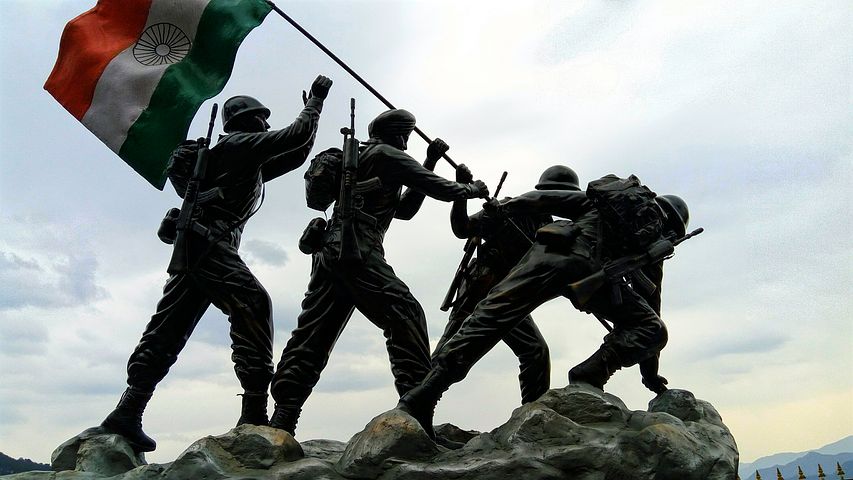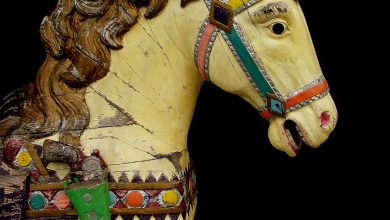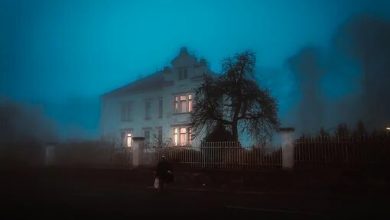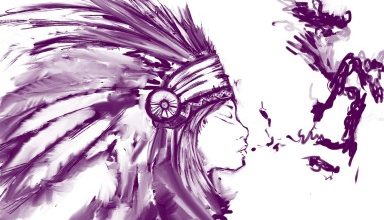
The Gift of India is a poignant and patriotic poem by the Sarojini Naidu which praises the sacrifices made my the Indian soldiers in World War I . Dealing with the theme of courage and selfless sacrifice, The Gift of India is also an ode to the unsung heroes, the children of Mother India who laid their lives for others.
The Gift of India | The Title
When the First World War broke out Britain faced a serious problem. It had a shortage of soldiers to fight against Germany. Thus it asked its colonies for help. The title here talks of the Gift that India bestowed upon Britain during this critical juncture. The poet here takes on the voice of Mother India and talks about the greatest gift that she has bestowed upon the Empire, the gift of her sons who have been martyred in far away lands fighting an enemy with whom they have no immediate conflict. The poem consist of 24 lines a follows the rhyme scheme of aabbcc pattern.
The Gift of India | Summary and Analysis
The Gift of India |Stanza 1
Is there aught you need that my hands withhold,
Rich gifts of raiment or grain or gold?
Lo! I have flung to the East and West
Priceless treasures torn from my breast,
And yielded the sons of my stricken womb
To the drum-beats of duty, the sabers of doom.
The poem opens in first person point of view wherein India, in the figure of the Motherland asks a rhetorical question concerning the sacrifice of her brave sons. This is a host of what she has to say:
Is there something that you want that I have ever held back? I have already given you rich gifts of clothing food and gold. I have already sent my most priceless treasure: the sons of my womb who have gone all around the world to march to the beating of drums and perish at the hands of enemies.
Mother India makes a mighty claim in the very first stanza of the poem and while it may seem like a claim heavily tinted by sentiments, one mustn’t forget that it is a claim based on hard facts. The role of India (or any other colonies for that matter) in World War 1 has been largely ignored but the fact remains that over a million Indian soldiers actively to fought for British interests alongside Allied forces . The rich gifts of raiment or grain or gold isn’t a mere poetic invention either. British India supplied around . And the fact that India helped the British despite being under their colonial rule is a much underappreciated fact.
A literary technique is used to emphasize the extent of help provided to the British :
Rich gifts of raiment or grain or gold?
This technique of repeating successive conjunction in a line is known as polysyndeton.
The personification of India as mother is made explicit when she says that her sons (priceless treasures) have been torn from her breast and that she has yielded her children from her “grief stricken womb” to the horrors of the battlefield. Her claim of having flung her priceless treasures to the East and West the fact that Indian soldiers were posted in various battlefronts, ranging from East Africa to the Western Front. The image of a mother who gives away the sons of her womb to the service of the Allied forces speakers as much of her own valour and sense of duty as that of her brave sons’. The call of duty (drum beats if duty) and swords of death and ruin (sabres of doom) evokes the atmosphere of war. This image is extended in the second stanza which brings to full view the horrors of war. Interestingly, the “drum-beats” of the last line of the first stanza lead is to the the sights of the war in the second stanza is similar to the manner in which the war-cry and the drum beats herald the actual war.
The Gift of India | Stanza 2
Gathered like pearls in their alien graves
Silent they sleep by the Persian waves,
Scattered like shells on Egyptian sands,
They lie with pale brows and brave, broken hands,
They are strewn like blossoms mown down by chance
On the blood-brown meadows of Flanders and France.
Mother India bemoans the fact that her children have been collected like pearls and shells in their foreign graves : by the Persian waves, the sands of Egypt and meadows of Flanders and France. They lie dead with pale foreheads (pale brows) and mutilated bodies (brave broken hands) and are scattered like flowers cruelly killed by misfortune (cut down by chance) .
Three similes are used to describe the solders. They are likened to pearls, shells and blossoms. The choice of such comparison highlights the qualities of her sons as she sees it : they are precious, fragile and innocent to her maternal-self like pearls, shells and blossoms.
The reference to Persia, Egypt and Flanders and France highlights that these were the major theatres of where Indian soldiers fought : against Ottoman Empire (Persian waves), in North Africa ( Egyptian sands) and the Western Front (meadows of Flanders and France).
This stanza makes use of alliteration to heighten the image of war and the sacrifice of the soldiers, some of which include Silent they sleep, Scattered like shells on Egyptian sands and perhaps the most prominent line being :
They lie with pale brows and brave, broken hands
Words like gathered, scattered and strewn capture the recklessness and the negligence with which the bodies of the dead soldiers have been treated. The violence of war and the horrors of it is captured by a powerful visual imagery towards the end of the stanza when the Mother bemoans how the soldiers have become like blossoms ruthlessly sheared and cut down on the blood soaked meadows of France and Flanders (a Dutch-speaking region in Belgium).
The Gift of India | Stanza 3
Can ye measure the grief of the tears I weep
Or compass the woe of the watch I keep?
Or the pride that thrills thro’ my heart’s despair
And the hope that comforts the anguish of prayer?
And the far sad glorious vision I see
Of the torn red banners of Victory?
This stanza sees the Mother ask other nations whether they can measure the grief that she feels or the tears that she weeps for her fallen sons. She asks them whether they can calculate the sorrow of the watchful eyes that are waiting for her children or the pride that overpowers the despair of her heart. She asks them whether they can experience the hope that she feels while praying for the safety of my children and the sad glorious vision she sees of the torn flags of victory, covered with the blood of her martyred sons. Nobody will ever be fathom the suffering she has been through and nobody will ever be able to compensate for the sacrifice made by her brave sons.
This stanza is replete with pathos and the intensity of the emotions experienced by Mother India is conveyed by an effective literary technique . Notice the lines:
Or compass the woe …
Or the pride that thrills …
And the hope that comforts …
And the far sad glorious…
As is evident each of these lines open with the same word/words. This technique of repeating the word/s at the beginning of consecutive lines is known as anaphora and is very of used in speeches and expression of emotions which this poem effectively is.
One must remember that the War was still going on when this poem was written. It wasn’t only the anguish over the death of the soldiers but also the hope of many being alive which racked the emotional frame of the sobbing country. Numerous went missing . Many families offered hopeful prayers of hopelessness and awaited the homecoming of their sons… Some were consumed by that hope, for hope is also a dangerous thing. It consumes you from within.
The Mother is proud of the sacrifices made by her sons for the greater good and this pride thrills through her heart’s despair. The poet sees the “far sad glorious vision” of the “torn red banners of Victory”. The victory which will be bright by the efforts of her children is glorious but it will also be a sad one for some sacrifices are too great to be replaced by winning. The banners of Victory are torn and red for it is bathed in the blood of Indians who sacrificed their for the victory of the British Empire in the war.
The Gift of India | Stanza 4
When the terror and tumult of hate shall cease
And life be refashioned on anvils of peace,
And your love shall offer memorial thanks
To the comrades who fought in your dauntless ranks,
And you honor the deeds of the deathless ones,
Remember the blood of my martyred sons!
The mother wishes that when the war gets over and life returns to normal, when the nations begin honoring the soldiers who fought by their side, the sacrifice of her sons must be honored too and the their rightful glory must be given to them. This is the message she has for the Allied forces , especially Britain : Offer your gratitude and love to your fallen comrades who fought bravely by your side. Honor their memory and the brave deeds of the fearless ones. Remember the blood of the martyred sons of India.
This stanza foresees a state of peace after the war gets over and it makes a claim for the honor and respect that must be given to the fearless Indians who fought the war for their oppressors (remember, India was still under the British rule at that time).
The alliteration of terror tumult of the war gives way to the use of assonance which is in line with the mood of peace and tranquility that shall prevail :
And your love shall offer memorial thanks
The use of assonance captures sweet sound of the ‘love’ and ‘thanks’ that shall be given to the soldiers of war.
The idea of refashioning life on the anvils of peace hints at an old military idea of converting swords to plowshares – of converting weapons to tools of utility for peaceful civilian purpose. An anvil is a forging tool used for beating metals – converting swords to plowshares, a place where life be refashioned on anvils of peace.
The Mother reminds the respect the British Empire owes to the deeds of the deathless ones. The alliteration reinforces the appeal to remember the sacrifice of the Indian soldiers when Mother India ends the poem with the lines which is at once an appeal and a demand :
Remember the blood of my martyred sons!
- Something to Think About!
Over 1.5 million Indian troops served overseas, of whom 62,000 died and another 67,000 were wounded. In total at least 75,237 Indian soldiers died during the war. The reason for the death of such a large number of Indian soldiers was because of the despotic British government who deployed the Indian soldiers for dangerous duties near enemy ranks.
The selfish British Empire gave no attention to these Indian beliefs of cremation. They simply dragged all the Indian dead bodies into mass graves and buried them underground without performing any Hindu rituals of samskara. The Empire gave a different type of treatment to the dead bodies of the British soldiers. Each and every one of the white bodies were respectfully collected from the warfronts and taken home by chartered flights of the British Airways. Once in England, they were given a ceremonial welcome and the burial ceremony was conducted according to the proper Christian practices.
In the fourth and last stanza of the poem, Sarojini Naidu makes a request to the British Empire. She wants the empire to remain thankful for the sacrifice done by the dead Indian soldiers. Indians fought the war with equal or higher courage compared to their English counterparts. So Mother India wants the empire to remember the sacrifice done by the sons of India for the success of the empire. She wants the empire to honor the dead soldiers along with the honors going to be given for the British martyrs. But what happened in the end? The dead British soldiers were celebrated as war-heroes. Their widows were summoned to the Buckingham Palace and posthumous awards were presented in honor of their dead husbands. Their children were given reservation for higher studies in prestigious military academies and even future employment was guaranteed to them. But, in the case of the dead Indian soldiers, no such consideration was given. They were not given the status of martyrs because they were all poor and black Indians. All that their relatives received was a telegram from the war office informing the death of their near ones in the war.






This was sooo helpful in my last-minute prep for the exams.
You guys are a lifesaver!!!